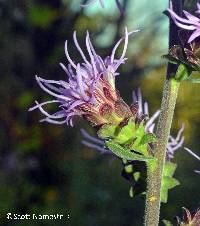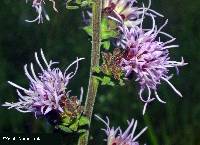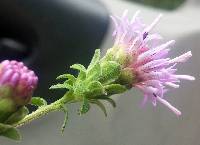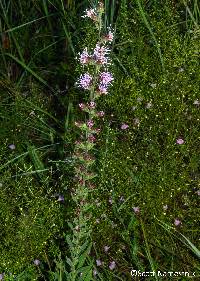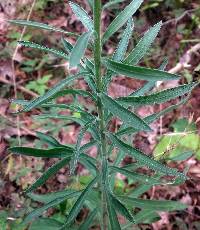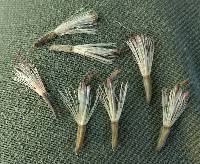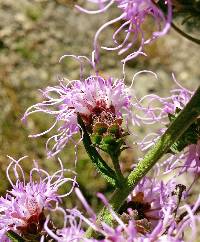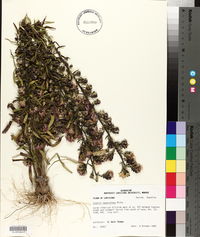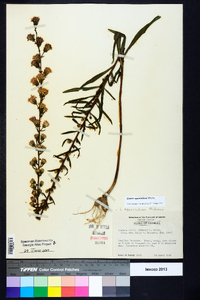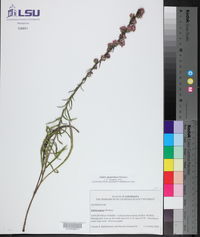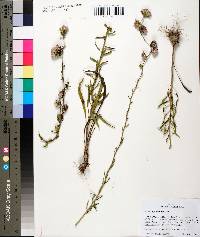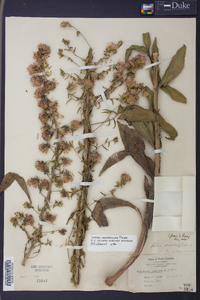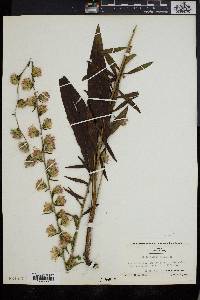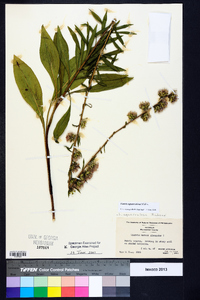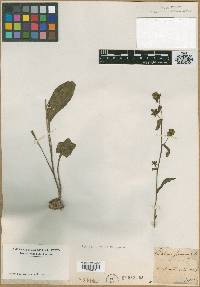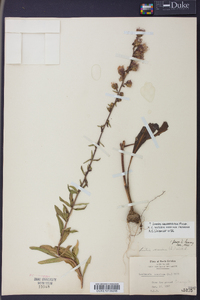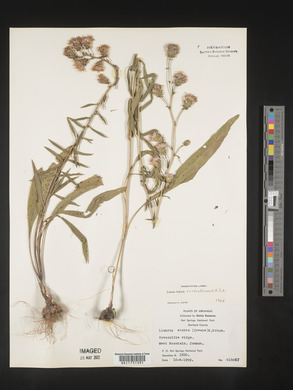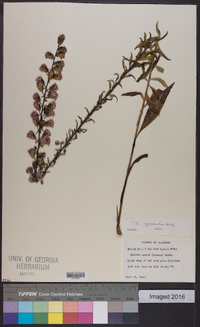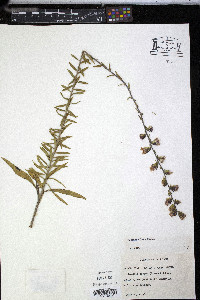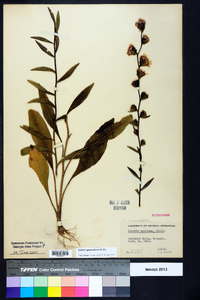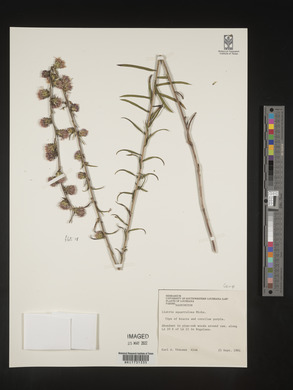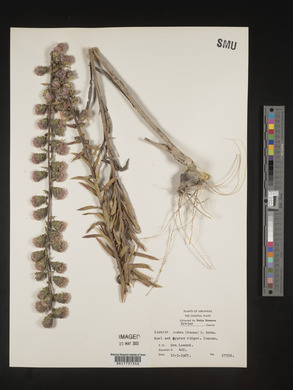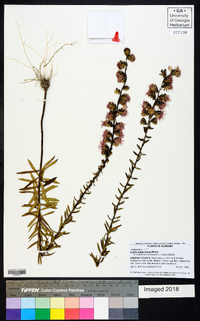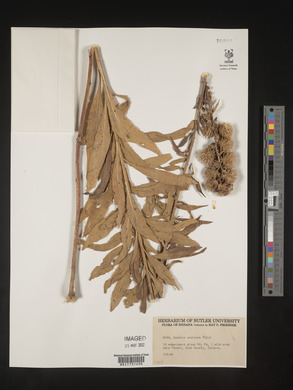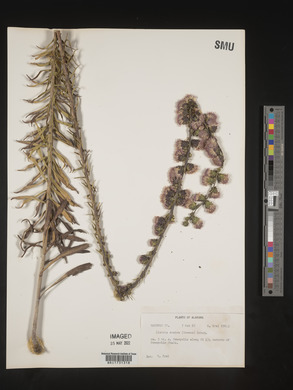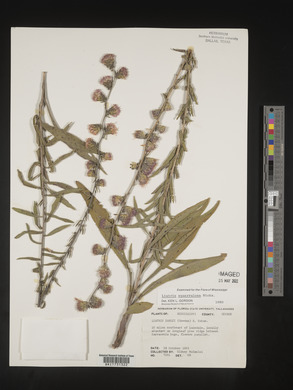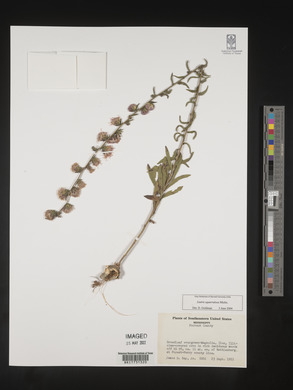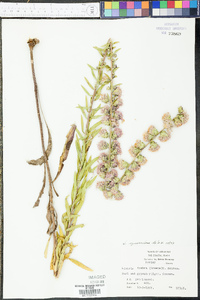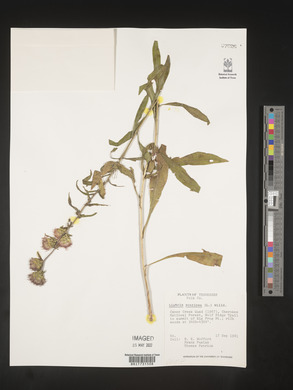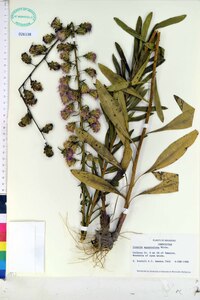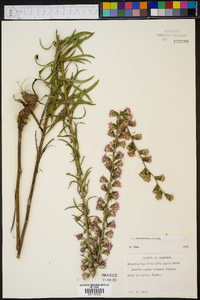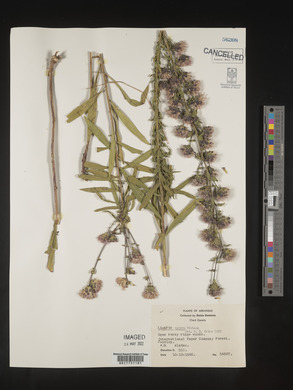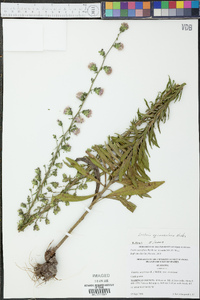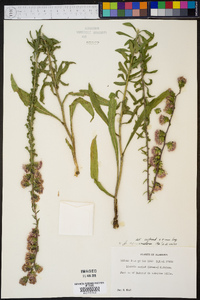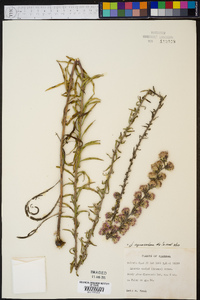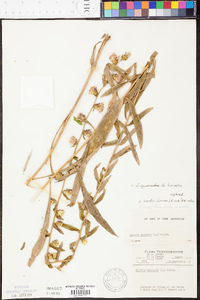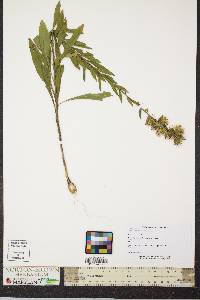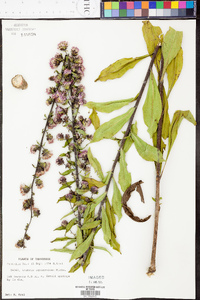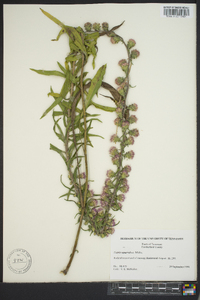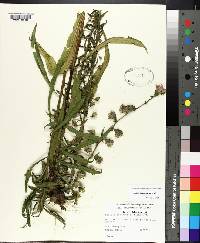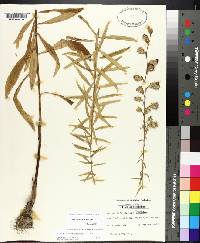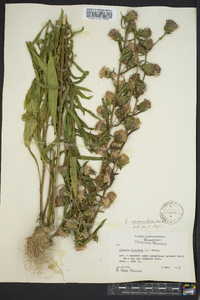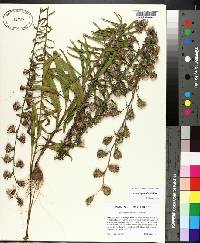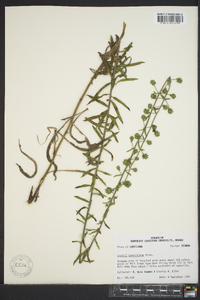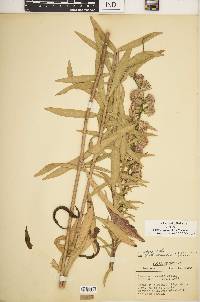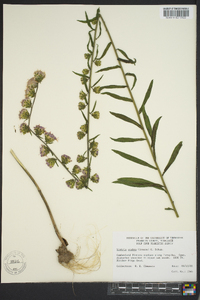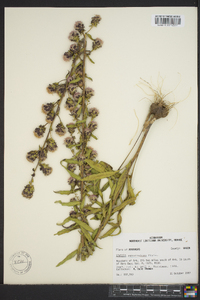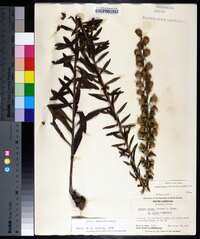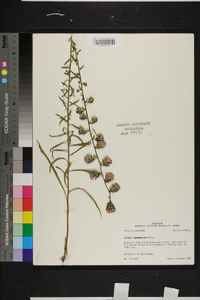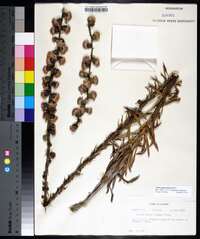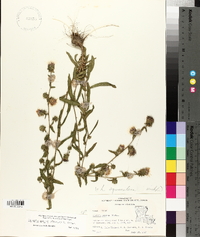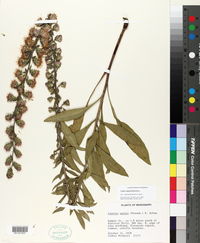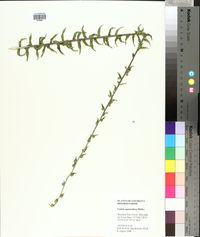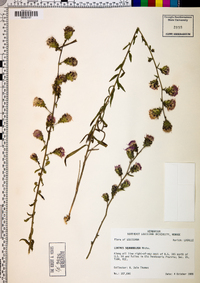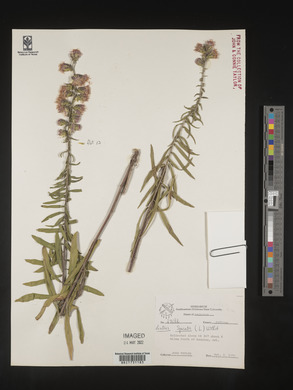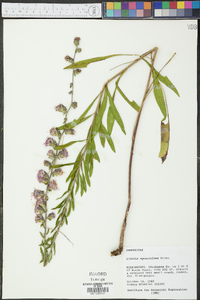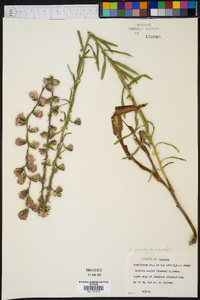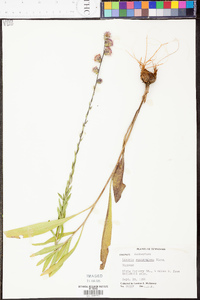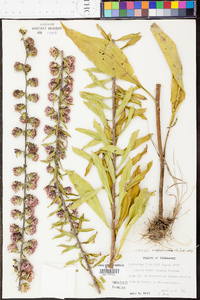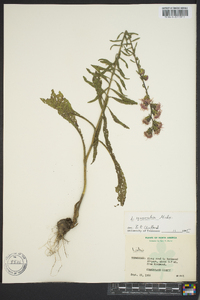
|
|
|
|
Family: Asteraceae
Appalachian Gayfeather
|
Plants 25-80(-130) cm). Corms globose. Stems puberulent. Leaves: basal and proximal cauline 1-nerved, usually oblanceolate- to elliptic-spatulate to oblanceolate, 80-290 × 12-25(-45) mm, abruptly, then little or gradually, reduced distally, essentially glabrous or puberulent or hirtellous-hispidulous, weakly, if at all, gland-dotted. Heads in loose to dense, racemiform to spiciform arrays. Peduncles usually 0, sometimes (ascending to spreading or deflexed) 2-8(-30) mm. Involucres turbinate to turbinate-campanulate or campanulate-cylindric, (6-)8-12 × (6-)8-15 mm. Phyllaries in 4-5(-6) series, (usually spreading to distally reflexed, sometimes erect) obovate to oblong-spatulate, unequal, essentially glabrous or puberulent to puberulent-hirtellous, margins sometimes with relatively narrow, weakly differentiated hyaline borders, apices acute to obtuse (at least outer) or rounded (mid and inner). Florets 11-26(-28); corolla tubes pilose inside. Cypselae (3-)3.5-5.5(-6) mm; pappi: lengths ± equaling corollas, bristles barbellate. Flowering (Jul-)Aug-Oct(-Nov). Pine, oak, and oak-hickory woods, scrub oak, prairies, rocky ridges and slopes, marl ridges, sand hills and ridges, alluvial woods (rarely), fencerows, road banks, roadsides, sand, clay, chalk; 0-600(-1000) m; Ala., Ga., Ill., Ind., Ky., La., Miss., Mo., N.C., S.C., Tenn., Tex., W.Va. Liatris squarrulosa occurs across a range of habitats and exhibits much variation in habit, vestiture, and head size (involucral dimensions, numbers of florets, lengths of cypselae); it has not been possible in herbarium study to discern discrete geographic patterns. Plants in South Carolina (including the type of L. squarrulosa) are shorter, leaves and phyllaries are consistently glabrous or sparsely puberulent, involucres are (6-)7-10 × 6-10 mm, and mid to inner phyllaries usually are narrowly oblong. Westward and northward, plants are taller, leaves and phyllaries characteristically have more strongly elaborated vestiture (although considerable variation exists and glabrous plants are scattered nearly through the range), heads range larger, and phyllaries vary from broadly obovate to oblong-spatulate. An overview of head size is indicated by the following measurement samples: South Carolina-florets 12-16, cypselae (3-)3.5-4 mm; Georgia (including the type of L. earlei)-florets (11-)14-21, cypselae 4-5 mm; Alabama-florets 11-20, cypselae 3.5-5(-6) mm; Illinois (including the type of L. scabra) and Tennessee-florets 16-24, cypselae 3.5-5.5 mm; Louisiana-florets 16-21, cypselae 3.5-5 mm; Arkansas-florets (13-)21-26, cypselae 3.5-5 mm. Plants apparently disjunct in a cluster of north-central North Carolina counties have glabrous phyllaries and leaves, large heads, and the phyllaries are broad, more like plants to the west than those southward. Populations in southwestern North Carolina (Cherokee, Clay, Macon, and Swain counties) and adjacent Tennessee, South Carolina, and Georgia appear to combine features of Liatris squarrulosa and L. scariosa var. scariosa. The plants are within the range of L. squarrulosa and disjunct from L. scariosa. The habit (large basal leaves, few cauline) is common to both taxa; heads are sessile to short-pedunculate (as in L. squarrulosa) and phyllaries are usually erect (the outer triangular and sometimes reflexing) and slightly broader than is characteristic of L. squarrulosa and often have a narrow hyaline border. These add further heterogeneity to the concept of L. squarrulosa, as circumscribed here; they may represent a separate evolutionary entity. The type of L. ruthii Alexander (an illegitimate name) from Tennessee is this form. Hybrids: Liatris species readily form hybrids. Named hybrids and their p Similar to no. 1 [Liatris scariosa (L.) Willd.] and evidently hybridizing with it, but avg more robust, to 15 dm, and often more evidently hairy; heads 6-60, often more than 20, commonly in a spiciform infl with the heads turned away from the axis, or the peduncles sometimes more elongate and ascending-spreading, to 5 cm; invol glabrous or often evidently short-hairy, the middle and outer bracts commonly notably loose or squarrose above the middle; fls (11-)14-24(-28) per head. Dry woods and open places, especially in rocky or sandy soil; s. W.Va. and s. O. to s. Mo., s. to Fla. and La. July- Sept. (L. earlei; L. ruthii; L. scabra-the more hairy phase; L. tracyi) Gleason, Henry A. & Cronquist, Arthur J. 1991. Manual of vascular plants of northeastern United States and adjacent Canada. lxxv + 910 pp. ©The New York Botanical Garden. All rights reserved. Used by permission. From Flora of Indiana (1940) by Charles C. Deam Indiana Coefficient of Conservatism: C = 9 Wetland Indicator Status: N/A |
|
|
|


